Other Names: Common Plantain, Broadleaf Plantain, Great Plantain, Greater Plantain, Ripple Grass, Plantago Asiatica, Waybread, Waybroad, Snakeweed, Cuckoo’s Bread, Englishman’s Foot, White Man’s Foot, Che Qian Zi (China), Breitwegerich (German), Tanchagem-maior (Portuguese), Llantén común (Spanish), Llantén major (Spanish)
cluster of plantain herb in wild Plantain Habitat
cluster of plantain herb in wild Plantain Habitat
Plantain is a perennial herb, thought to be of Eurasian origin and now naturalized throughout the world. Plantain is considered a common and noxious weed by some and a miracle plant by others.
Plantain Cultivation:
Plantain Cultivation:
Plantain is very easy to cultivate, it succeeds in any soil and prefers a sunny position, some forms have been selected for their ornamental value. It is an important food plant for the caterpillars of many species of butterflies. Plantain grows from a short, tough rootstock or rhizome, which has a large number of long, straight, yellowish roots, is a basal, rosette of large, broadly oval, dark green, leaves. The 4 to 10 inch long smooth, thick, strong and fibrous leaves have 3 to 7 or more ribbed veins, abruptly contracting into a long, petiole (leaf stalk) which is reddish at the base. The leaf margin is of Plantain is entire, or unevenly toothed. The flower stalks, are erect, long, slender, densely-flowered spikes. Each tiny flower is brownish and bell-shaped with four stamens and purple anthers. Flowers bloom most of the summer. The fruit is a two-celled capsule and containing four to sixteen seeds. Harvest fresh young edible leaves in spring. Gather Plantain after flower spike forms, dry for later herb use.
Plantain Medicinal Properties and Herbal Use: Plantain is edible and medicinal, the young leaves are edible raw in salad or cooked as a pot herb, they are very rich in vitamin B1 and riboflavin. The herb has a long history of use as an alternative medicine dating back to ancient times. Being used as a panacea (medicinal for everything) in some cultures, one American Indian name for the plant translates to “life medicine.” And recent research indicates that this name may not be far from true! The chemical analysis of Plantgo Major reveals the remarkable glycoside Aucubin. Acubin has been reported in the Journal Of Toxicology as a powerful anti-toxin. There are many more highly effective constituents in this plant including Ascorbic-acid, Apigenin, Baicalein, Benzoic-acid, Chlorogenic-acid, Citric-acid, Ferulic-acid, Oleanolic-acid, Salicylic-acid, and Ursolic-acid. The leaves and the seed are medicinal used as an antibacterial, antidote, astringent, anti-inflammatory, antiseptic, antitussive, cardiac, demulcent, diuretic, expectorant, haemostatic, laxative, ophthalmic, poultice, refrigerant, and vermifuge. Medical evidence exists to confirm uses as an alternative medicine for asthma, emphysema, bladder problems, bronchitis, fever, hypertension, rheumatism and blood sugar control. A decoction of the roots is used in the treatment of a wide range of complaints including diarrhoea, dysentery, gastritis, peptic ulcers, irritable bowel syndrome, haemorrhage, haemorrhoids, cystitis, bronchitis, catarrh, sinusitis, coughs, asthma and hay fever. It also causes a natural aversion to tobacco and is currently being used in stop smoking preparations. Extracts of the plant have antibacterial activity, it is a safe and effective treatment for bleeding, it quickly stops blood flow and encourages the repair of damaged tissue. The heated leaves are used as a wet dressing for wounds, skin inflammations, malignant ulcers, cuts, stings and swellings and said to promote healing without scars. Poultice of hot leaves is bound onto cuts and wounds to draw out thorns, splinters and inflammation. The root is said to be used as an anti-venom for rattlesnakes bites. Plantain seeds contain up to 30% mucilage which swells in the gut, acting as a bulk laxative and soothing irritated membranes. The seeds are used in the treatment of parasitic worms. A distilled water made from the plant makes an excellent eye lotion.
Plantain Herbal Folklore and History: Native Americans carried powdered roots of Plantain as protection against snakebites or to ward off snakes. Plantain was called Englishman’s Foot or White Man’s Foot as it was said to grow where ever their feet touched the ground – this is referred to in Longfellow’s ‘Hiawatha.’. Some old European lore states that Plantain is effective for the bites of mad dogs, epilepsy, and leprosy. In the United States the plant was called ‘Snake Weed,’ from a belief in its efficacy in cases of bites from venomous creatures.
Plantain Recipes
“Medicinal” herb tea: For colds and flu use 1 tbls. dry or fresh whole Plantain (seed, root, and leaves) to 1 cup boiling water, steep 10 min. strain, sweeten. Drink through the day.
Healing salve: In large non-metallic pan place 1lb. of entire Plantain plant chopped, and 1 cup lard, cover, cook down on low heat till all is mushy and green. Strain while hot, cool and use for burns, insect bites, rashes, and all sores. Note: used as night cream for wrinkles.
Article by Deb Jackson & Karen Bergeron
Plantain Medicinal Properties and Herbal Use
Plantain is edible and medicinal, the young leaves are edible raw in salad or cooked as a pot herb, they are very rich in vitamin B1 and riboflavin. The herb has a long history of use as an alternative medicine dating back to ancient times. Being used as a panacea (medicinal for everything) in some cultures, one American Indian name for the plant translates to “life medicine.” And recent research indicates that this name may not be far from true! The chemical analysis of Plantgo Major reveals the remarkable glycoside Aucubin. Acubin has been reported in the Journal Of Toxicology as a powerful anti-toxin. There are many more highly effective constituents in this plant including Ascorbic-acid, Apigenin, Baicalein, Benzoic-acid, Chlorogenic-acid, Citric-acid, Ferulic-acid, Oleanolic-acid, Salicylic-acid, and Ursolic-acid. The leaves and the seed are medicinal used as an antibacterial, antidote, astringent, antiinflammatory, antiseptic, antitussive, cardiac, demulcent, diuretic, expectorant, haemostatic, laxative, ophthalmic, poultice, refrigerant, and vermifuge.
Medical evidence exists to confirm uses as an alternative medicine for asthma, emphysema, bladder problems, bronchitis, fever, hypertension, rheumatism and blood sugar control. A decoction of the roots is used in the treatment of a wide range of complaints including diarrhoea, dysentery, gastritis, peptic ulcers, irritable bowel syndrome, haemorrhage, haemorrhoids, cystitis, bronchitis, catarrh, sinusitis, coughs, asthma and hay fever. It also causes a natural aversion to tobacco and is currently being used in stop smoking preparations. Extracts of the plant have antibacterial activity, it is a safe and effective treatment for bleeding, it quickly stops blood flow and encourages the repair of damaged tissue. The heated leaves are used as a wet dressing for wounds, skin inflammations, malignant ulcers, cuts, stings and swellings and said to promote healing without scars. Poultice of hot leaves is bound onto cuts and wounds to draw out thorns, splinters and inflammation. The root is said to be used as an anti-venom for rattlesnakes bites. Plantain seeds contain up to 30% mucilage which swells in the gut, acting as a bulk laxative and soothing irritated membranes. The seeds are used in the treatment of parasitic worms. A distilled water made from the plant makes an excellent eye lotion.
I infused some olive oil with plantain leaves last summer, but hadn’t used the oil. I was planning on salve, I wasn’t sure how to use it, I’m new at this – all the usual excuses apply. About a month ago, I noticed I was getting an itchy rash on my arms where I had gotten a little too much sun while gardening. I got a little pinker than I probably should have, too. Enter the plantain oil. At the very least, I figured it would “do no harm”, so I spread it on the rash and sunburn. Within a matter of days, the rash was gone, and the burn turned to tan – it didn’t peel. Success!
I had this strange little patch of dry skin near my eyes for the longest time – on went the plantain oil to that, too. That one took a little longer (about two weeks), but it’s cleared up now, too.
Use Plantain to Treat Bites and Stings
Next target -wasp string. I was at my Great Uncle’s house scrubbing egg off a plate with a metal scouring pad, when “the pad” stabbed me. I set the scrubber down and out crawls a large black wasp. (Bill told me after the fact that, “Oh yes, he had seen some of those around.” I guess it didn’t like being used to scrub plates. My finger started swelling and burning. I started running cold water on the sting, and hollered for my son to run outside and grab some plantain. He comes back in a matter of minutes with a nice, healthy leaf, and into my mouth it goes. Chew, chew, chew - spit it out – onto the bite. The worst of the pain started subsiding within minutes. I wrapped the green blob onto my finger with a band-aid and left it there for the rest of the afternoon and evening. (Plantain tastes very green, in case you’re wondering.)
Here’s what the sting looked like at the end of the day:
Note: insect damage is very clear, but there is no sign of inflammation or swelling (no welt). There was no pain at all the following day. Three days later and I’m sporting two dots, that’s it. The last time I was stung, I remember wearing the welt for several days. This was so much better.
To recap:
To use plantain leaves for bites and stings -
- Find a clean leaf
- Chew or otherwise mash it to release juices
- Apply to affected area until pain/itching subsides
Fast forward to an evening in the garden with a voracious cloud of mosquitoes. I rubbed herbs on my exposed skin, but they bit right through my shorts! I must have had at least 20 bites on my tush. I considered posting a picture of my backside, but that would have been a little too much information. Oh man, did it itch! I took a quick shower and coated all my bites with some plantain oil. Again, within a matter of minutes, the pain and itching subsided.
How to Make Plantain Infused Oil
First, gather up a bunch of plantain leaves, preferably unmarked. I visited my brother recently and he had some enormous plantains. (My brother now lives in grandma’s old house.) Some of the leaves were nearly the size of a sheet of paper. The bugs seemed toe prefer the larger leaves, so I ended up with somewhat smaller ones, but several were still HUGE compared to the ones that grow in my garden. Here’s one of them next to a quart Mason jar for comparison.
I gave these a thorough wash. I know some herbals say not to wash your herbs before using because you may decrease potency, but if you look at the sediment in the bottom of the wash basin, you can see why I did in this case.
Ew… I don’t eat this (although I could), but I still don’t care for all that grit. I usually prep enough to fill a quart Mason jar at one time. After a run through the salad spinner and patting dry with a towel, I stack up piles of leaves on the cutting board and do a nice chiffonade. *Note: You want these as dry as possible to help prevent mold in your infusion.
First you stack -
Then you roll -
Then you slice -
You’re looking for plenty of exposed surface area. Place the chop herb into a clean, dry jar and fill with olive oil. Make sure all the plant material is submerged in the oil, and poke around in the jar with a chopstick or knife to eliminate air pockets. Screw on the lid. Label the jar with the name of the plant, the plant part (if you have many oil going), the kind of oil used and the date. Keep the jar of infusing oil at room temperature and on a surface that will not be ruined by seeping oil. Some of the texts I have read recommend a sunny window sill, and I have deep sills in my kitchen, so that’s where mine live.
Mix the contents of the jar daily (or give it a good shake). After several days it will start to smell like pepperoni – this is normal. Decant the oil (strain out the plant material) in four to six weeks. I use myjelly bag strainer.
Allow the decanted oil to settle for a few days, then bottle the finished oil in dark jars. You may get sediment or water in the bottom as the oil settles – try to keep this out of your finished product by pouring off the oil carefully. Seal the bottles, label, and store in a cooler, dry, dark place. (I keep mine in a laundry room cabinet, which might not be ideal, but it seems to keep just fine.) I have purchased some storage bottles, but I also save my extract bottles from the kitchen and clean and reuse them for oil storage.
If you want to get a little fancier with your plantain, or have some dried plantain on hand, take a peek at Michele’s recipes for herbal bee sting paste and healing herbal baby powder.
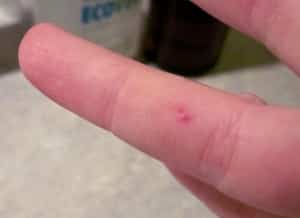
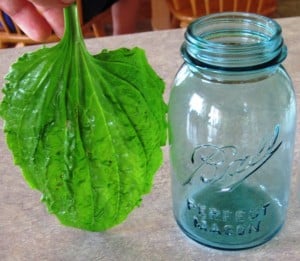
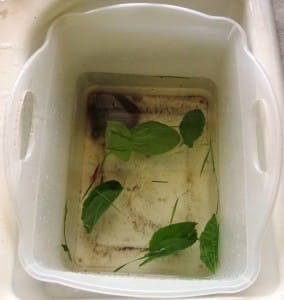
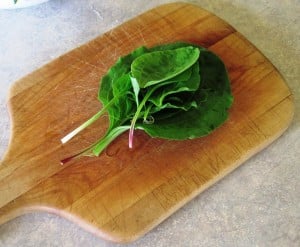
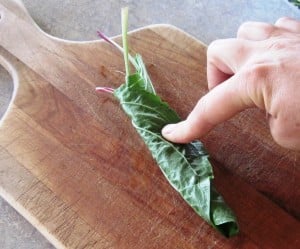
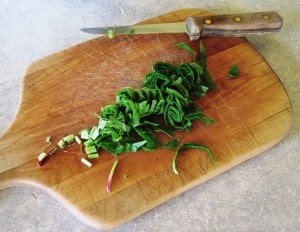
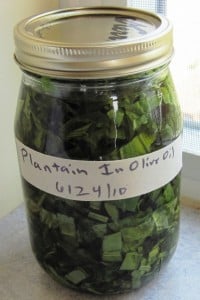
No comments:
Post a Comment